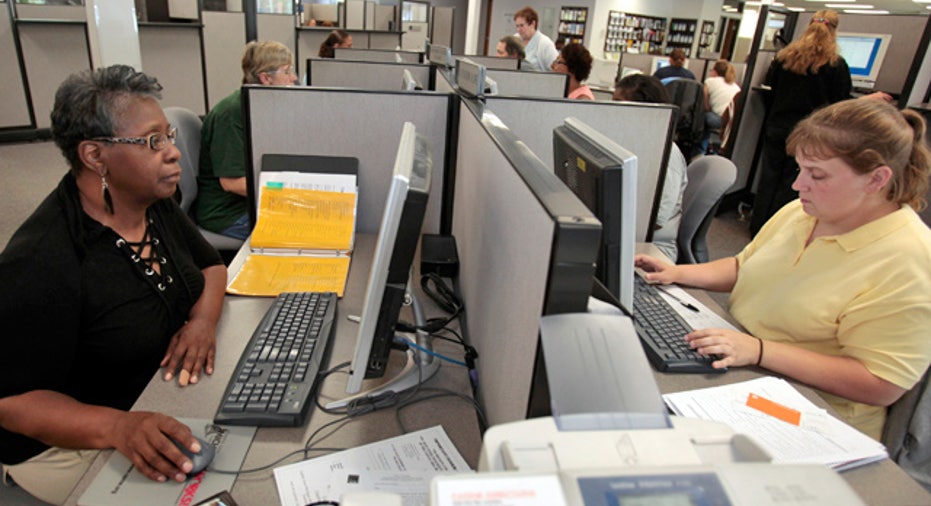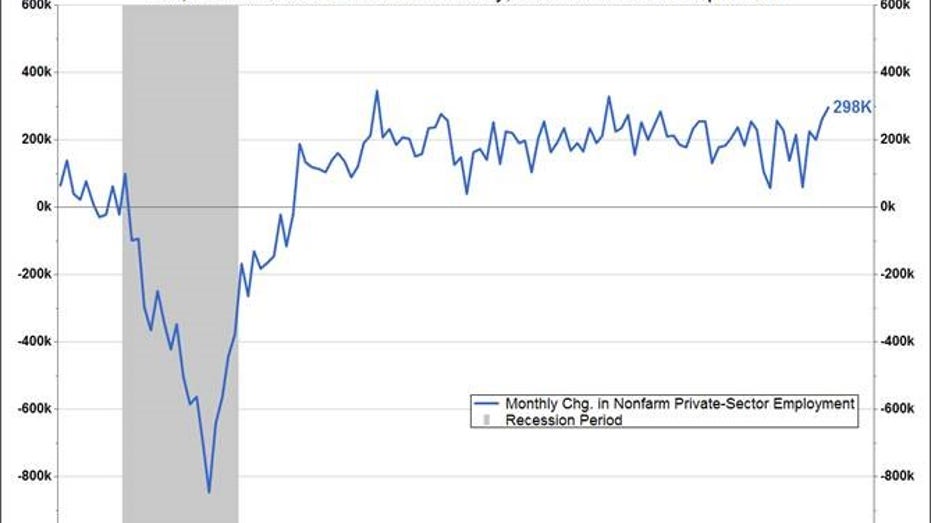U.S. Private Employers Step up Hiring; Productivity Sluggish

Hiring by U.S. private employers surged in February, pointing to underlying strength in the economy that could encourage the Federal Reserve to raise interest rates next week.
The ADP National Employment Report showed on Wednesday that private payrolls grew by 298,000 jobs last month, well above economists' expectations for a gain of 190,000. January's private payrolls gains were revised up to 261,000 from 246,000.
The report, jointly developed with Moody's Analytics, came ahead of the release on Friday of the U.S. Labor Department's more comprehensive employment report. The ADP report, however, has a poor track record predicting the private payrolls component of the government's employment report.

According to a Reuters survey of economists nonfarm payrolls likely increased by 190,000 jobs in February after rising by 227,000 in January. The unemployment rate is forecast edging down to 4.7 percent from 4.8 percent in January.
Fed Chair Janet Yellen said last week that the U.S. central bank would likely raise rates later this month as long as economic data on jobs and inflation held up.
Prices of U.S. Treasuries were trading lower after the ADP data, while stock index futures were slightly higher. The dollar was stronger against a basket of currencies.
WEAK PRODUCTIVITY
In a separate report on Wednesday, the Labor Department said nonfarm productivity, which measures hourly output per worker, rose at an annualized 1.3 percent rate in the final three months of 2016, as it had estimated last month.
Weak productivity suggests it will be hard to significantly boost economic growth. President Donald Trump has pledged to boost annual growth to 4 percent. The economy has not achieved 3 percent annual growth since the 2007-2009 recession ended.
Economists polled by Reuters had expected fourth-quarter productivity would be revised to show it rising at a 1.5 percent rate. Productivity grew at a 3.3 percent pace in the third quarter. It increased 0.2 percent in 2016, the smallest gain since 2011, after rising 0.9 percent in 2015.
Sluggish productivity has boosted employment growth as companies hire more workers to maintain output, partially explaining the divergence between payroll gains and economic growth. The economy grew 1.6 percent in 2016, while job growth averaged 187,000 per month.
Productivity has increased at an average annual rate of 0.6 percent over the last five years, well below its long-term rate of 2.1 percent from 1947 to 2016.
That has lowered the economy's long-run potential and could undermine U.S. living standards. Some economists believe productivity is being inaccurately measured, especially on the information technology side.
Others blame low capital expenditure, which they say has resulted in a sharp drop in the capital-to-labor ratio.
Unit labor costs, the price of labor per single unit of output, increased at an unrevised 1.7 percent pace in the fourth quarter. They rose at a 0.7 percent rate in the third quarter.
Unit labor costs rose 2.6 percent in 2016 after increasing 2.0 percent in 2015. The increase in hourly compensation per hour was also unrevised at a 3.0 percent rate in the fourth quarter, suggesting that wage growth is picking up.
Hourly compensation rose 2.9 percent in 2016 after a similar increase in 2015. (Reporting by Lucia Mutikani; Additional reporting by Chuck Mikolajczak in New York; Editing by Paul Simao)



















